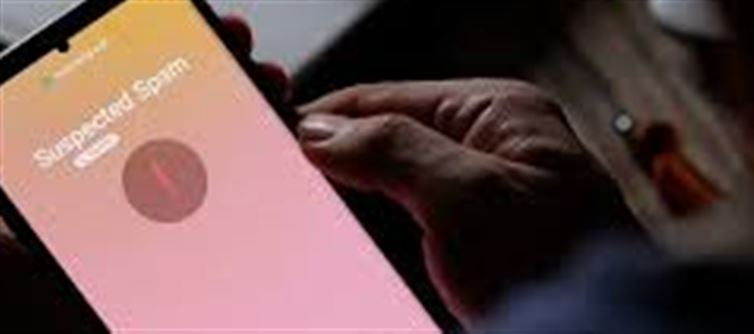
India is all set to take a big leap in improving telecom security and curbing spam calls with the Verified Caller ID feature. Starting by 2026, the Telecom Regulatory Authority of india (TRAI) is working towards implementing this system to ensure authenticity for incoming calls. Let’s break down what this means for indian phone users and how it could transform the way we handle calls.
1. What Is Verified Caller ID?
The Verified Caller ID system is designed to allow users to see the real name of the person or organization calling them, even if it’s from an unfamiliar number. The technology behind this system will authenticate the caller's identity and display it on your phone screen.
- Eliminating Fake Caller IDs: The days of receiving calls from “Papa” or “Airtel Care” (when it’s actually a marketing call) will be over. You will know exactly who is calling.
- No More Spam Calls: The new system could significantly reduce spam and telemarketing calls, as the verification will weed out fake or malicious numbers that hide behind well-known caller names.
2. Why Is This Important for India?
India has been battling the rampant issue of fraudulent calls, especially those pretending to be customer care representatives or from banks and government agencies. These types of calls often lead to:
- Financial Frauds: Callers impersonating legitimate services to steal personal or banking information.
- Increased Annoyance: The constant bombardment of spam calls, often offering free services or credit cards, leaves users frustrated and confused.
This new system will go a long way in ensuring transparency and authenticity in every phone call, making it easier for users to identify genuine callers from fraudulent ones.
3. How Will Verified Caller ID Work?
The Verified Caller ID system is expected to work through network-level authentication. Here's how it will function:
- Authentication by Telecom Operators: Telecom service providers like Airtel, Jio, and Vi will be responsible for authenticating the calls at the network level. Once verified, the caller's details, such as the real name or organization, will be displayed on your phone.
- No Third-Party Apps Needed: Unlike services like Truecaller, which rely on user-generated data, this system will be a government-backed and operator-verified solution. No need for third-party apps to manage your caller ID anymore.
4. Impact on Users
For indian mobile users, this feature promises to bring several benefits:
- Peace of Mind: Users will have greater confidence in picking up calls without the fear of falling victim to fraudsters.
- Clearer Communication: You’ll no longer get tricked by falsified caller identities.
- Better Call Control: As users will now know who’s calling, they can better prioritize their calls and decide whether to pick them up or not.
5. Impact on Telecom Operators and Businesses
For telecom operators, this system means a massive upgrade in their infrastructure. They will need to invest in network-level verification systems and integrate these capabilities into their existing networks.
- Impact on Businesses: Businesses and call centers will be required to register their numbers and authenticate them through the telecom operator's system. This means more legitimate and transparent interactions for customers.
- Spam Call Prevention: As fraudsters will find it much harder to spoof legitimate numbers, there could be a significant decline in spam calls.
6. A Step Forward in Cybersecurity
This initiative marks an important step in improving cybersecurity and protecting consumers from digital fraud. With the rise in digital scams and identity theft, the Verified Caller ID is a crucial tool to help safeguard users’ personal data from unscrupulous elements trying to manipulate or steal it.
7. When Can You Expect It?
India plans to roll out this system by 2026, giving ample time for telecom companies to implement the necessary infrastructure and for businesses to get their numbers authenticated.
While Truecaller and similar services have been widely used in india to tackle spam calls, this government-backed solution promises to be more effective and widely accessible.
8. Will Truecaller Be Affected?
The Verified Caller ID system could mean a decline in reliance on third-party apps like Truecaller. Currently, Truecaller has a massive user base in india, with millions relying on it to identify incoming calls. However, with official telecom authentication being implemented, users might not need to depend on third-party apps to identify callers.
That being said, Truecaller’s identity verification services will still be useful for those looking for additional features, such as spam detection and caller-blocking, although the necessity for its core feature might reduce.
9. How Will This Affect Telecom Regulations?
The TRAI’s new initiative is also expected to streamline regulations and ensure better transparency in telecom operations. It could also pave the way for other countries to adopt similar systems, as India sets the stage for a global shift toward verified caller information.
10. Conclusion: A Win for Consumers
The Verified Caller ID feature promises a safer and more transparent communication experience for all Indian phone users. By reducing fraudulent calls and allowing users to know exactly who’s calling, it will enhance the overall user experience, promote cybersecurity, and reduce the reliance on third-party apps. This initiative is a big step forward in tackling one of the most pervasive issues in the mobile telecom space today, and with its roll-out in 2026, the future of communication in india looks much clearer.
Disclaimer:
The views and opinions expressed in this article are those of the author and do not necessarily reflect the official policy or position of any agency, organization, employer, or company. All information provided is for general informational purposes only. While every effort has been made to ensure accuracy, we make no representations or warranties of any kind, express or implied, about the completeness, reliability, or suitability of the information contained herein. Readers are advised to verify facts and seek professional advice where necessary. Any reliance placed on such information is strictly at the reader’s own risk..jpg)




 click and follow Indiaherald WhatsApp channel
click and follow Indiaherald WhatsApp channel